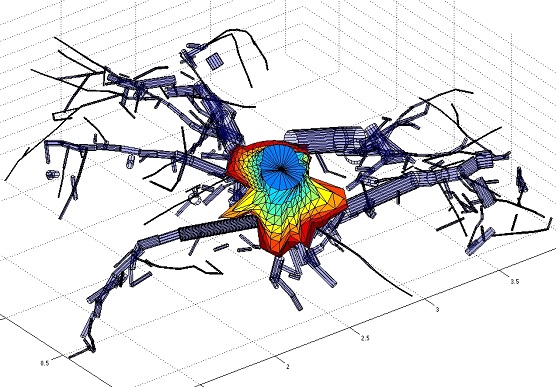Press release 2013-05-30 at 15:04
After 20 years of use, bioenergy produced from tree stumps and roots is generating 25–35% less emissions than coal. After 50 years of use the difference would be 40–50%. The results have been obtained using a new measurement method developed by researchers from the Finnish Environment Institute (SYKE), the Finnish Geodetic Institute, and the Tampere University of Technology.
With the European Commission currently preparing a draft directive on the criteria for solid biofuel sustainability and emission calculations, the calculations for stump-root bioenergy are currently topical. The sustainability and emissions limit for liquid biofuels has already been set at a minimum 60% emission reduction compared to the fuels they will replace. This is also considered to be the probable limit for solid biofuels. According to the results now obtained, stump-root bioenergy will fall short of this level of emission reduction.
3-D modelling reveals the magnitude of indirect emissions
The new method uses terrestrial laser-scanning data to measure the structure of uprooted stump-root systems, and constructs 3-D models. ”The models allow us to simulate the decomposition of tree stumps and roots in different types of forest with far greater accuracy than before,” says Jari Liski, Research Professor at SYKE. ”Reliable assessment of the rate of decomposition is critical if we are to produce accurate figures for the carbon dioxide emissions of stump-root bioenergy.”
Harvesting of the residue from forest felling and its use in energy production will have the effect of reducing forest carbon reserves. The reason for this is that whereas the decomposition of residue would store carbon in the forests for a further several decades, burning would instantly release this carbon into the atmosphere. The scale of these so-called "indirect" emissions depends on the rate of decomposition: the faster the decay, the less indirect emissions will result from burning. Of forest residue, decomposition is slowest in stumps and roots, which will thus produce the most in indirect emissions.
The calculations just completed show that after 20 years of decay slightly over 50% of stumps and roots remained, compared to the earlier estimate of over 60%. As a consequence of this more rapid decomposition the carbon dioxide emissions arising from stump-root bioenergy production amounted to 71–81 grams per megajoule rather than the estimated 92 grams. By way of comparison, coal energy emissions stand at 110 grams per megajoule.
Planning of energy policy to include stump-root bioenergy emission calculations
One of the key objectives for bioenergy use is the mitigation of climate change through reduced emissions. This demands the accurate calculation of a range of bioenergy greenhouse gas emissions. Reliable emissions data are also needed for planning energy and climate policy.
The completed research is part of collaboration among research institutes aimed at producing up-to-date forestry information to meet the needs of sustainable forest and forest management.

3-D modelling showing the size of stump and root components for the purpose of calculating the rate of decomposition.
Further information
Research Professor Jari Liski, Finnish Environment Institute
tel. +358 40 748 5088, firstname.lastname@ymparisto.fi
Research Manager Sanna Kaasalainen, Finnish Geodetic Institute
tel. +358 40 560 3229, firstname.lastname@fgi.fi
Professor Mikko Kaasalainen, Tampere University of Technology
tel. +358 40 832 9412, firstname.lastname@tut.fi
Scientific article published on this subject
• Liski, J., Kaasalainen, S., Raumonen, P., Akujärvi, A., Krooks, A., Repo, A. & Kaasalainen, M. 2013.
Indirect emissions of forest bioenergy: detailed modeling of stump-root systems.
Global Change Biology Bioenergy. Doi: 10.1111/gcbb.12091